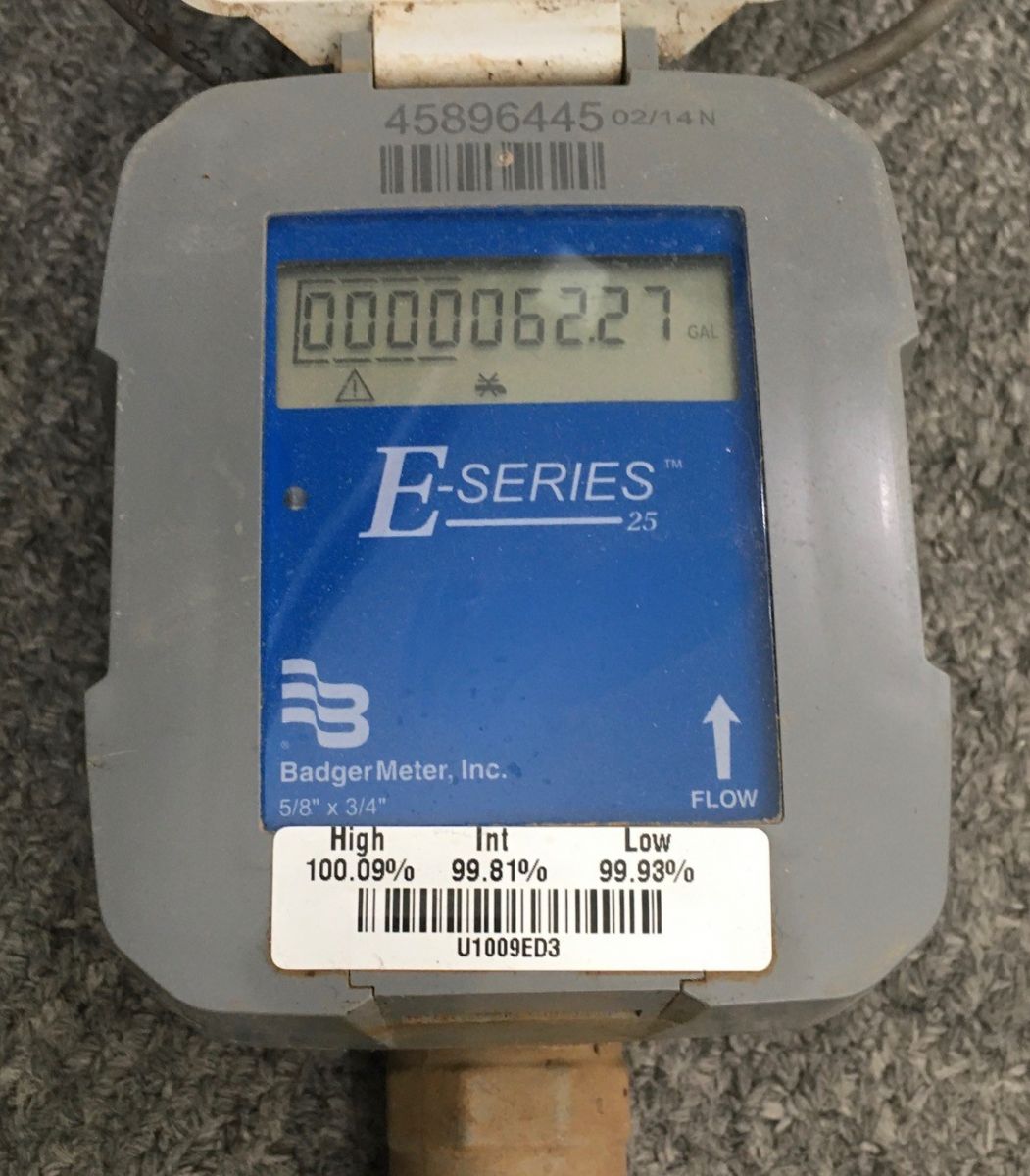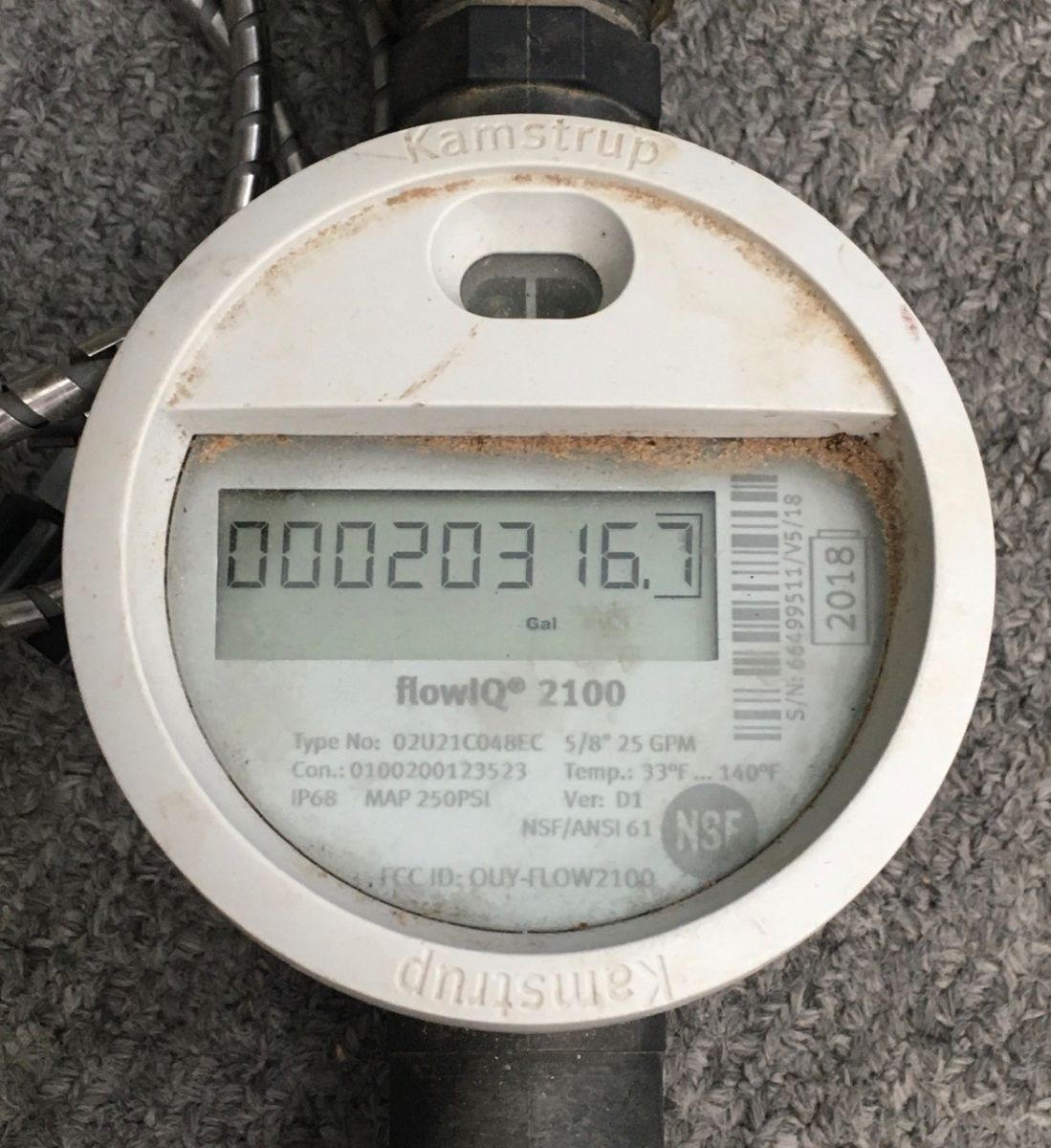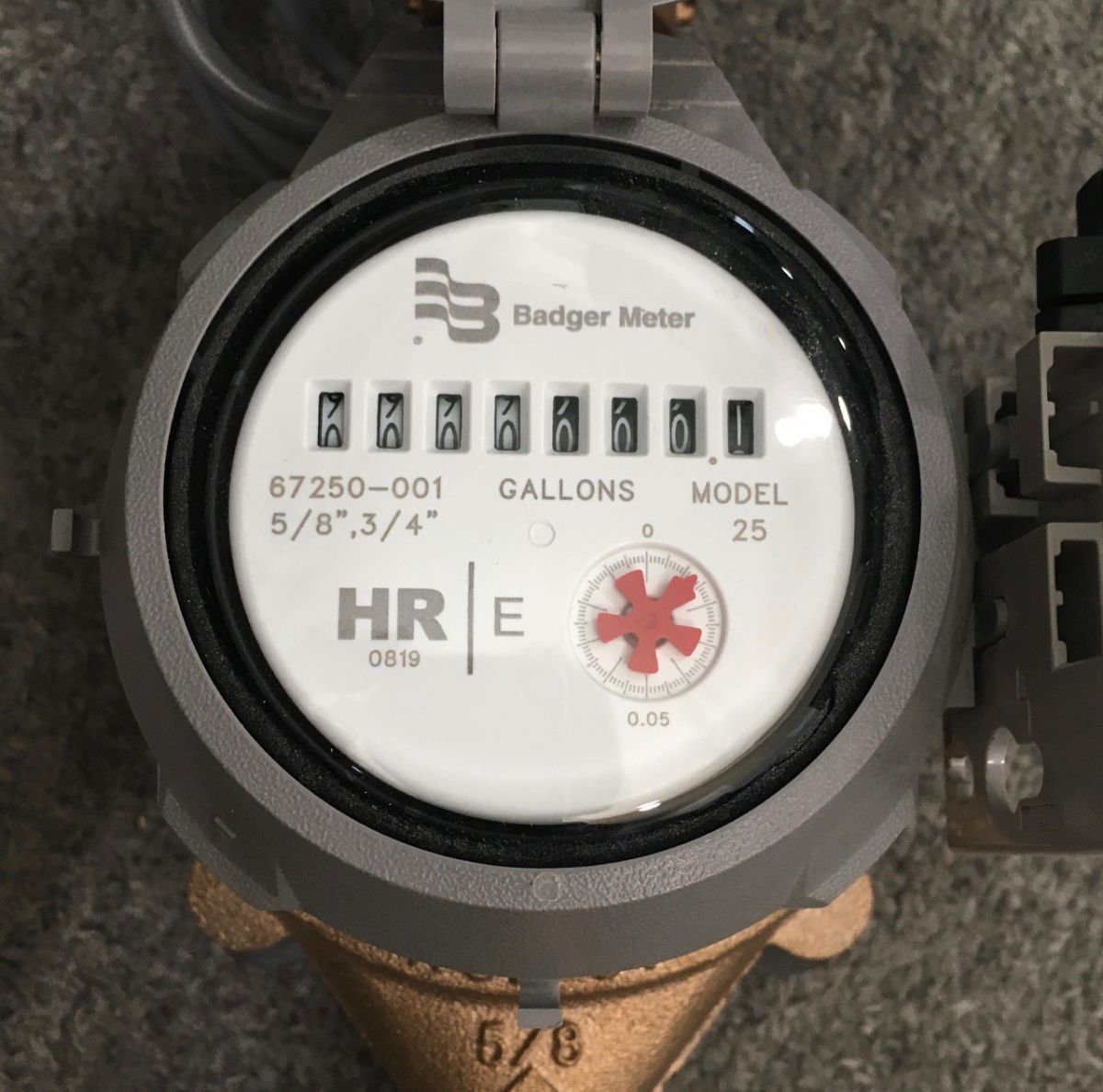STEP 1 Locate your meter box, generally found towards the front of a property near the road. The meter box may be made of concrete or plastic, with a metal or a plastic lid. Use caution when opening the lid as there could be critters inside.
STEP 2 Once you open the meter box lid, lift the protective cap on the meter. On the face of the meter there is a large dial and display of numbers. Meters measure water usage in gallons. For the residential meter, each rotation of the dial measures a tenth of a gallon. Read the numbers from left to right, stopping at the third number to the left of the decimal. This is your meter reading. Compare that reading to what your bill states as your current or present reading. Charges for the amount of water consumed are determined by the hundreds of gallons used from one recorded meter reading to the next. A billing cycle from “read date to read date” is typically 30 days. We normally read meters at mid month (around the 15th).
STEP 3 Keep in mind that you might be checking your meter on a date different from the one used for billing. This could result in a difference in the amount you find, compared with the amount on which your bill is based. However, if your reading is considerably higher than what is on your bill, or you notice the digits rolling when you are not using water, check for a leak or try to determine the source of large water use. If your reading is significantly lower than the reading shown on your bill, please contact us at (979) 828-4721 and let us assist you in determining the problem.




